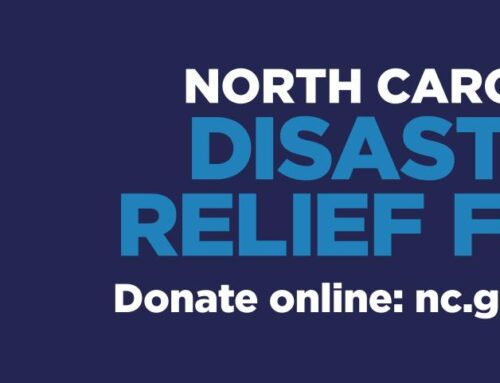Follow Gladiator Consulting on Instagram, Facebook and Twitter.
At the end of 2021, your organization went through many painstaking weeks and months drafting (and re-drafting, and re-drafting) an organizational budget that is fiscally responsible, grows capacity, and allows mission fulfillment. It required a lot of negotiation and compromise. There might be some risk, like big revenue goals or requiring increased frugality AND programming. Or perhaps, you had hoped for more budget for technology or additional staff that you did not get.
But, here we are in January, and the budget has been approved by the board of directors, your goals are set, and it’s time to get to work. Even more exciting – it’s time to start to think about where to get the best ROI on your marketing dollars.
No matter how the budgeting process went or what you ended up sacrificing or gaining, it’s always true that your dreams cost more than your budget. Below, we have compiled a list of areas to prioritize when planning your marketing investments.
1. Relationships with the Community You Serve
Let me introduce Community Centric Marketing (the sister of our favorite topic Community-Centric Fundraising). How can your organization’s marketing stay grounded in equity and social justice and center the voices of the people you serve? Consider the following:
- Dismantle non-profit silos. Donate to partner organizations, sponsor their events, join their campaigns as an organization, and encourage others to do the same.
- Show up for the community. Attend community events, build relationships and share learnings with your team, on social media, and with anyone who will listen.
- Make it a movement. Develop a community-led marketing committee and compensate people for their time*. You may realize that you don’t have to carry the world of marketing on your shoulders. And, you might be giving a colleague an opportunity to dip their toes in the marketing world while unlocking new ideas from someone other than you.
- Make space for stories. Develop and roll out an ambassador program where people you serve write (or record) their own stories and how they hope to impact others and compensate people for their stories*. (Check out this example from Forward Through Ferguson)
2. Quality Content
It’s hard to be in marketing in the twenty-first century without knowing that content is everything, but somehow in the non-profit sector, we continue to lag behind our for-profit counterparts in truly investing in the quality content that will connect with our audience. Maybe it’s because we’re busy, I don’t know, helping people? And yet, there’s an audience to engage. Consider the following strategies:
- Kickoff (or re-invent) your blog. 2022 is the year to invest time and resources into your external communications. You don’t have to do it alone. Engage other staff members, volunteers, community members and partners as authors and compensate them appropriately*. I brought this up before and I’ll say it again: there might be individuals in your company that want to indulge in their creative side, and you may benefit from their perspective: Coach, let them in the game.
- Give your social media platforms personality. There’s no better way to show your brand’s personality than through videos. TikTok and Instagram Reels have made creating engaging and quick videos easy to develop and show off your team, mission, and community.
- Podcasts still matter. Even as short-form content continues to grow in popularity, people are still turning to podcasts to dig deeper into their interests and passions. Starting a podcast would provide an opportunity to more deeply highlight your work and expertise (and will give you lots of sound bites you can pull into those short videos).
3. Graphic Design
We know (even if no one else at your organization does) that marketing is made up of a lot of specialties. So often as marketers, we are asked to fill the gaps of all the specialists, and we do ourselves and our organizations a disservice by attempting to be everything to everyone. Graphic design is a part of marketing that we firmly believe should be outsourced to those with those skills as often as it can be. Below are some of the ways we suggest you invest marketing budget into graphic design:
- Build relationships with graphic designers and optimize your collateral with their skill. (Please note that graphic designers and content creators do not fit in a single job description). Your collaboration with graphic designers is critical in dispersing the marketing strategy that YOU (marketing manager, etc.) have created. These humans are magical. We promise, their gifts from the heavens will only amplify your messaging.
- Ask them to build a variety of design assets you can use for day-to-day content or for campaigns. Pay an upfront premium so you own the assets and they are compensated fairly*.
- There are a variety of design software tools that can amplify your skills (whether they are limited or extensive). Consider what best serves your day-to-day marketing needs and invest in anything from Adobe Creative Suite to Canva.
4. Marketing software
It’s a season of rest and we’re dismantling hustle culture. Let’s work smarter, not harder. Consider the fruits of the last two decades (ahem…technology) a gift that will not only increase your organization’s audience (and thus, fundraising potential), keep data organized, and bring your external communications to the next level, but also create institutional memory during staff turnover or shifts. We already know you’re doing too much– consider the following technological supports to employ in your marketing efforts in 2022:
- Automation: Marketing automation uses software to automate repetitive marketing work. As marketing staff, you can automate your repetitive tasks such as email marketing, social media posting, ad campaign, and even personalized emails. This isn’t just more efficient, but when done well, it can create a more personalized experience for your stakeholders.
- Social media: There are technologies that can handle your post scheduling and alignment across social media platforms. Do all the work in one place, without having to jump back and forth between your personal and professional profiles. Trust me, we all hate accidentally posting our personal posts on our professional page *cringe*.
- Customer Relationship Management (CRM) tools: CRMs can feel like…a lot, but at the intersection of marketing and fundraising lives a quality CRM. Do not be afraid to dive into one of their training tutorials. Many also provide 24/7 tech support. And if all else fails, ask a Gen-Z’er to learn with you (and compensate them for their time!)– CRM competency is a marketable resume builder, and it might benefit both of you.
- Email: As you consider your CRM, think about how it integrates with your mass email system. Sure, you might prefer MailChimp, but if your CRM is integrated with Constant Contact (please insert any two systems here), use the system that will work across your data sources and will require the least amount of data transfer
Not all of these tools will work for every organization. But, they are all worth exploring, even if they are gradually implemented over time or not at all. Many of the aforementioned investment opportunities– especially the technologies– are constantly changing. A year from now, we may revise this article with all new technologies/trends/investment opportunities that will be critical to 2023. But as for now, we listed what’s working: and we hope to hear your thoughts– where are you investing your marketing dollars?
*Compensating an individual for their time, labor, and experience is a critical factor in honoring those you serve, creating a more equitable marketing program, and upholding your organization’s values.
Brooke Black is the Operations + Content Manager at Gladiator Consulting in St. Louis, MO. At Gladiator, Brooke connects with an array of organizations dedicated to justice and utilizes her passion for writing and a well-honed system to keep the Gladiator team on track and elevate the consultancy’s brand both within the St. Louis Region as well as in the Community Centric Fundraising movement. Brooke loves to solve problems and build communications that will convey a clear message and connect with an audience.
Ann Fisher-Jackson is the Chief of Staff at Gladiator Consulting in St. Louis, MO. Tapping into 10 years of communication leadership experience, Ann helps Gladiator clients define who they are, reach their target audience, and grow their donor base. She combines a deep commitment to improving her community with her gift of organizational and communication strategy. She loves to look outside the box and consider how other industries or organizations might solve the same problem.






